
Back in July 2021 Family Watson did a tour of the North West of Scotland. Hannah and I drove to Moffat on 27th June, stopping overnight before continuing to Dundee where we had another overnight stop. We met up with the kids in Dundee and on Monday, 29th June we set off on a lovely sunny morning on a trip from the east coast to Kerrera on the west coast.
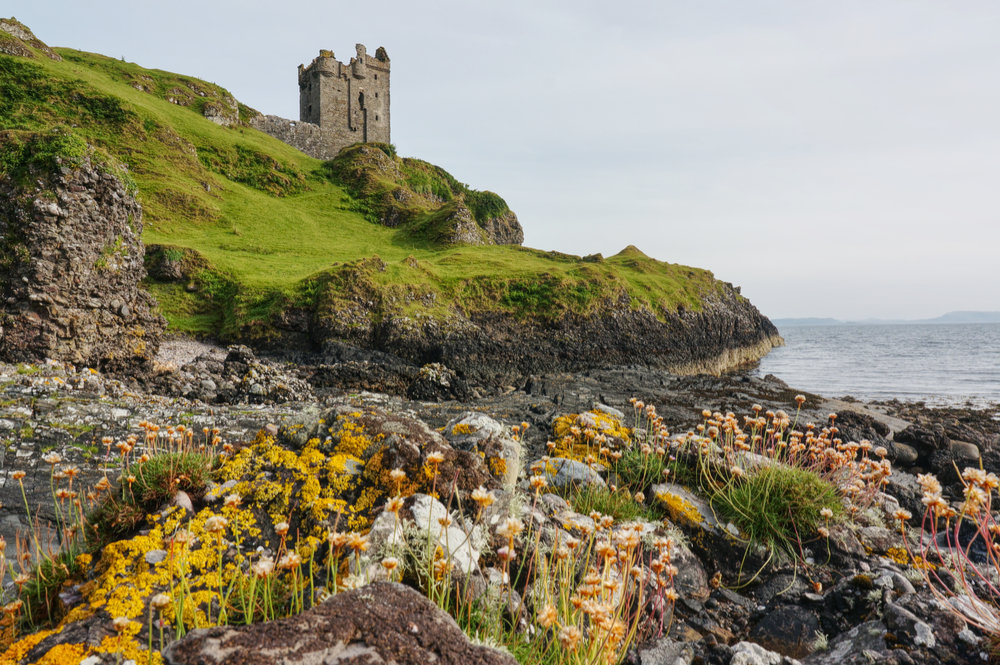
After a beautiful couple of days on the island of Kerrera, we set off north along the west coast. We had one overnight stop at Ardaneaskan before reaching our destination at Reiff.
I’d done plenty of research, hoping to walk some of the spectacular tops in Assynt. I had my eye on Stac Pollaidh, Suilven and Ben More Assynt. Since we had a week in Reiff, I figured I might be able to get at least a couple of those bagged. Sadly, the weather just wasn’t up to it. Although the first week of our tour had been lovely, the second was a week of low cloud and clag.
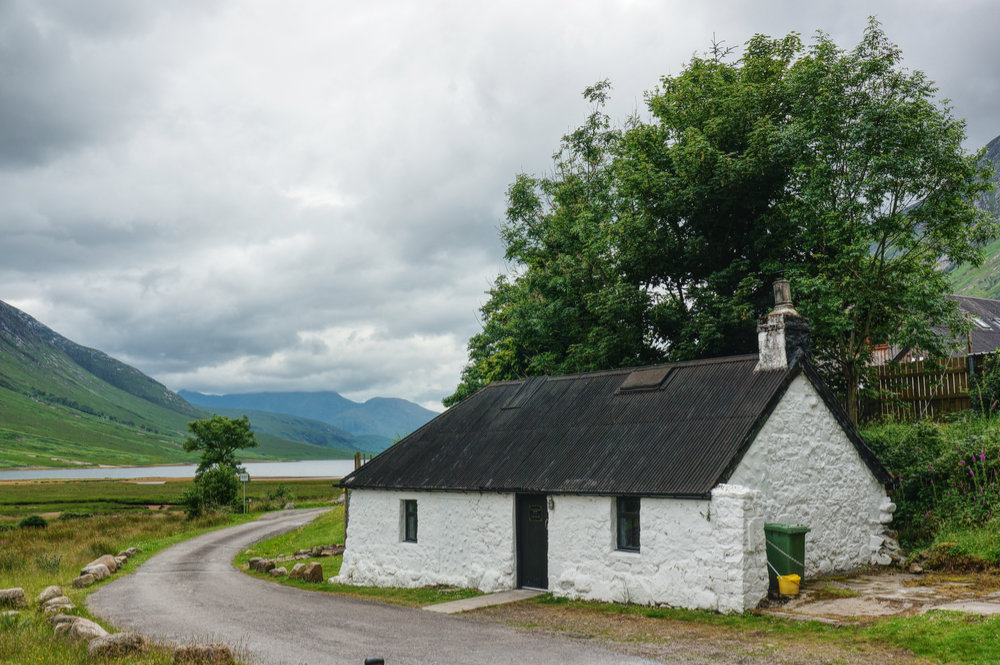
On the return leg we had three nights at a bothy in Glen Etive. The weather was improving and the bothy was within walking distance of Ben Starav, so I had my fingers crossed.
On 10th July, it looked as though the cloud might lift, so I prepared my kit and set off, hoping to bag my first Munro. Max had returned to Brighton a few days earlier and Tilda was spending time with boyfriend Ben, so I had the main part of the walk to myself. Hannah joined me as far as the Old Post Office at Druimachoish, where she turned back and wished me good luck.

I left the road on a works access track and crossed the River Etive on a new bridge, being built to take site traffic to the hydroelectric scheme that was now under construction. The landscape to the east of the river had clearly changed considerably in the preceding few months. A new access road had been established and enormous pipes were being buried. There was no point trying to follow the route on the map. Fortunately, the way ahead was clear, and after scrambling over recently dug earth mounds, I was on the lower slopes of the north-east ridge of Ben Starav.
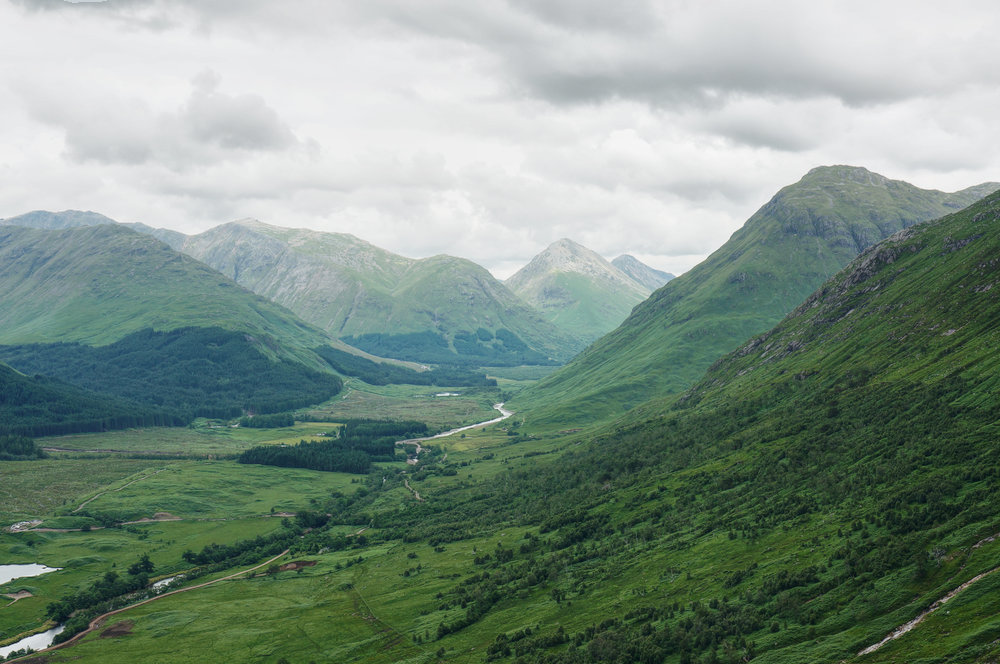
The air was clear and although there was still a lot of cloud about, it appeared to be rising and as I climbed, views along Glen Etive opened up behind me – it gave me a good excuse to make frequent short stops to admire the scene.
As I climbed, the sky grew darker. Weather was moving in from the south, so I didn’t see the squall until it was upon me. I put on my wet weather gear and wondered whether I’d still make it to the top, which was now obscured by cloud.

One of the features of the bothy was a lack of wi-fi and I had no phone service, so I hadn’t been able to check the recent weather forecast, so I had no idea whether the rain was in for the rest of the day or would just pass. I thought I might be thwarted on my final opportunity to bag a Munro on this trip but fortunately, the squall passed after about fifteen minutes and I was able to make headway again.
Against my better judgement, I was wearing my Mammut walking boots despite the fact that they had caused me some pain last time I’d used them in the Lakes. The upper slopes of Ben Starav had looked pretty rocky on the photographs I’d seen and I thought it wise to wear some stout boots. So far all was well and from what I could see of the summit, it did look rough going.
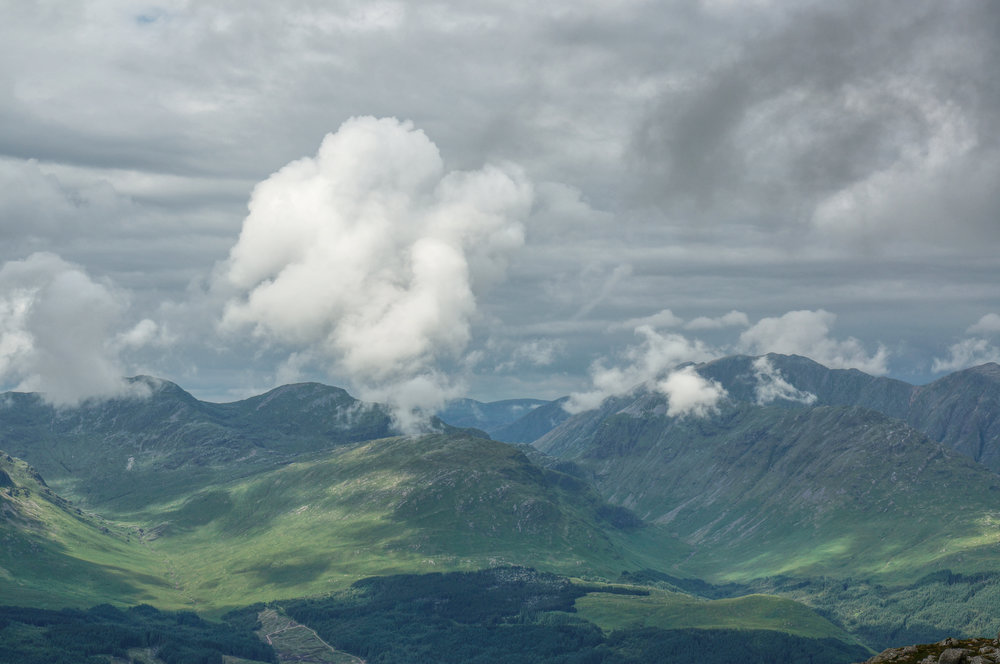
The north-east ridge is relentlessly steep except for a couple of slightly less steep sections, but I was managing to keep up a reasonable pace. The best thing was that I didn’t need to worry about navigation since the line of the ridge was clear and although visible footpaths weren’t always available, I was never in doubt.
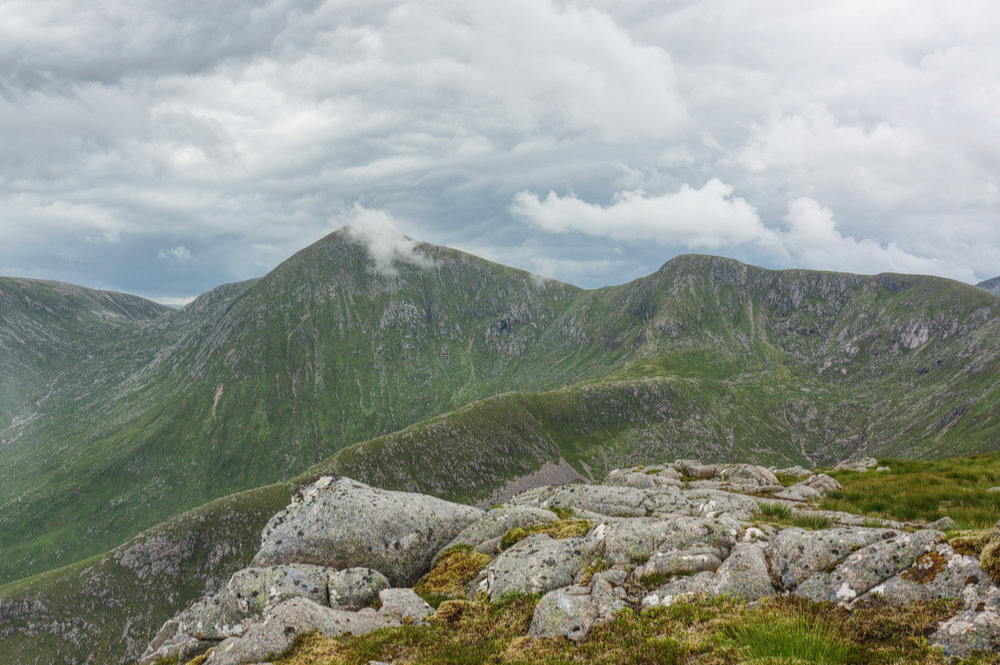
Above about 850m, the ridge narrows and there are fantastic views across the various corries to the east to Glas Bheinn Mhor, and to the west down to Loch Etive. Behind me the mountains of Glen Etive looked spectacular. It really was an amazing place to be.
As I got higher, I could see the summit more clearly. It looked a little intimidating and I could see that I would have to cross what looked like a difficult boulder field to get to it. The cloud was moving quickly so that one minute, the summit was there and the next it was gone. I was keeping my fingers crossed that I would arrive at one of those times when there was a break in the cloud.
I’d seen very few people on this walk so far. On the lower slopes I passed a couple of people who were on their was down, but now I could see a solitary walker up ahead, picking their way across the boulder field on the way to the summit. I hadn’t noticed them before and could only assume that they were climbing even more slowly than I was.
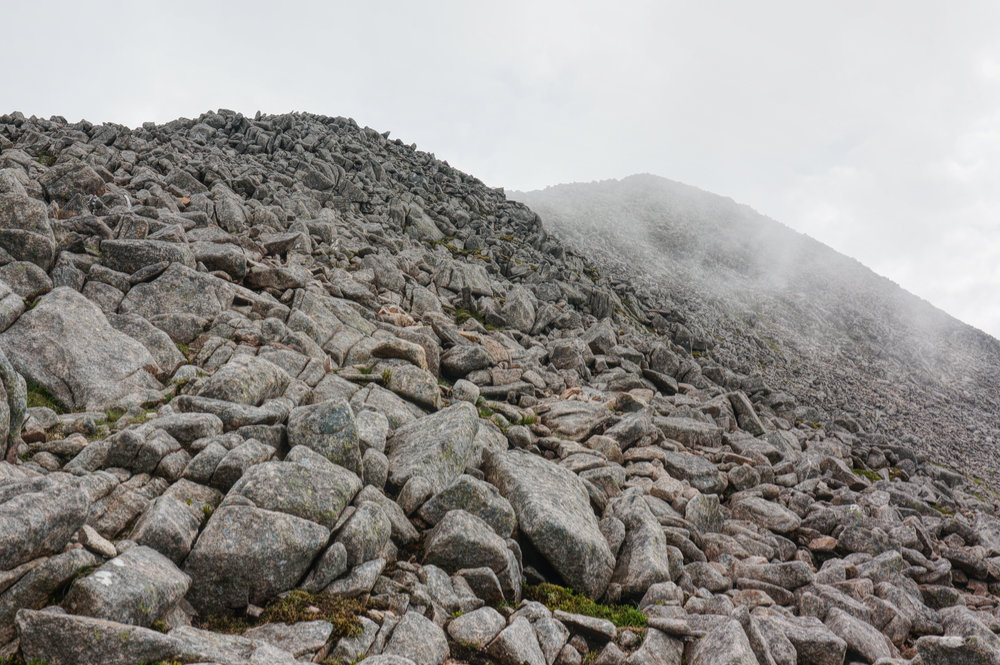
I pushed on and was soon at the start of the rocky approach. As is most often the case, what looks intimidating from a distance is rather less intimidating close up. Crossing the boulder field was awkward but the granite was rough and my grip was sure. I congratulated myself on wearing appropriate boots.
Just below the summit, I met my fellow summiteer on his return. We stopped for a few minutes and chatted. He was retired and older than me, another Englishman on a mission. He told me the summit had been wreathed in mist while he’d been there and he didn’t get a view out. I hoped I might have more luck. We said goodbye, he headed down and I continued up.
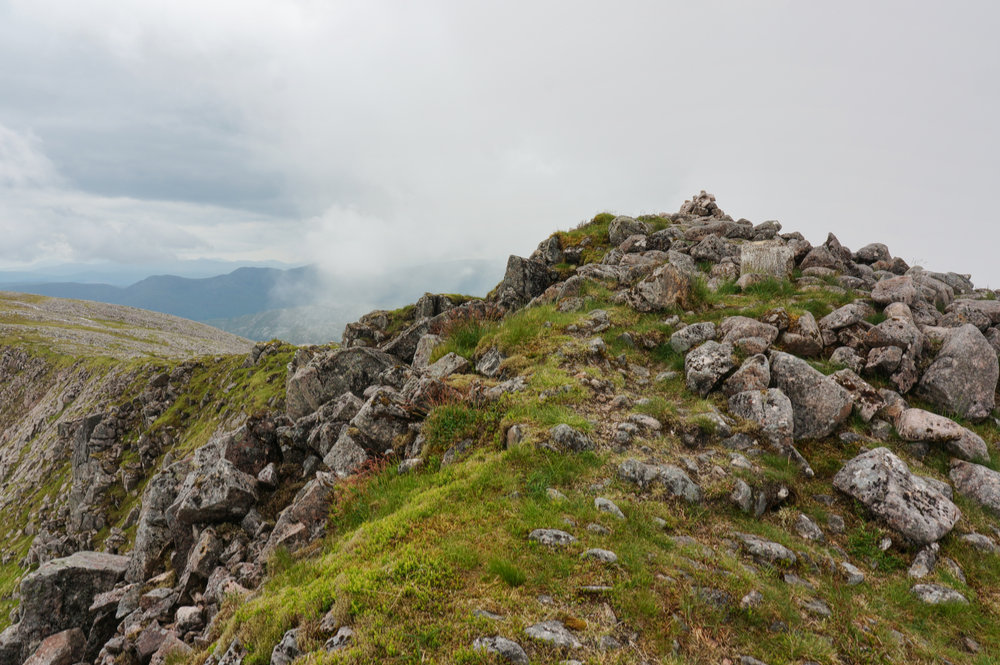
When I arrived at the summit, the cloud was down and views restricted, but it was moving quickly and I decided to hang around for a while, hoping to catch a break. The top was never completely cloud-free while I was there but I got some great views out between banks of cloud. Most notably, I could see Loch Etive far below, twinkling in the sunlight. I could even see the bothy where I’d begun the walk. I wondered whether Hannah was looking up at the mountain and might see me at the top.
I was now at the highest point I’d ever walked to. At 1078m, Ben Starav is exactly 100m higher than Scafell Pike in the Lake District. Even more impressive was the fact that this walk had begun just a few metres above sea level.

I thought about continuing around the head of the corrie to Stob Coire Dheirg, the way ahead looked pretty easy but, for whatever reason, I’d started the walk later than planned and thought I might run out of time (and daylight) if I were to extend the walk. As usual though, I hung around the summit for a while, taking in the views when the cloud allowed, reluctant to give up my lofty perch having expended so much energy to get there.
All too soon it was time to start my return. Initially, I attempted to take the same route from which I’d arrived, but I found myself on a steep scree path that looked unfamiliar, so I returned to the summit and followed the sharp edge of the ridge.
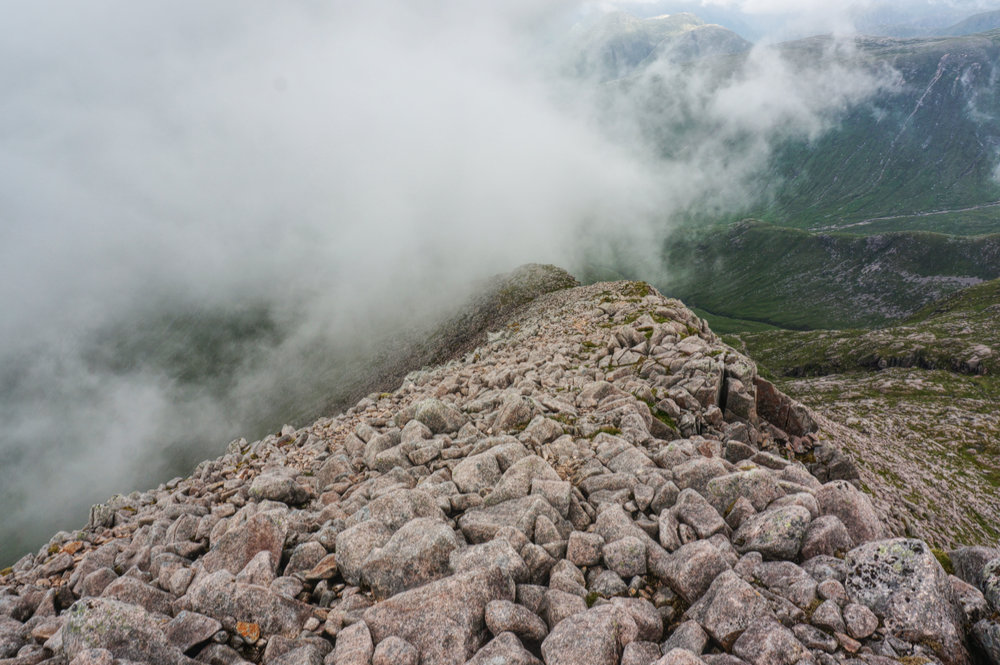
Pretty soon I was once again on familiar ground. The benefit of a relentless upward climb is that it’s downhill all the way back. The return leg was very enjoyable, not least because (as is often the case) the late afternoon weather was improving and I was treated to more sunlight as I descended.
After I’d cleared the boulder field, I could relax a little and was able to look back to the summit. Sunlight was now playing across the tops and it looked amazing.
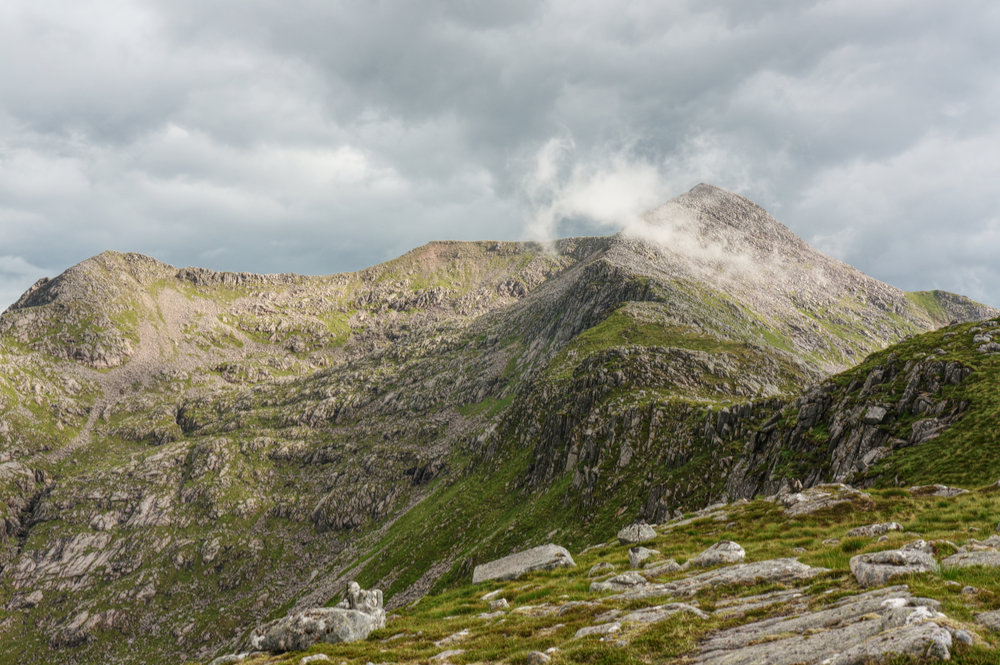
Further down, as the ridge broadens, there is a choice of route and the path is less distinct. It was nice to have the time to take it easy and explore a few of the places I’d missed on the way up.
As usual, I had my trusty nex-6 camera with me, and spent some time capturing the fleeting pools of sunlight as they highlighted the beautiful granite rock.
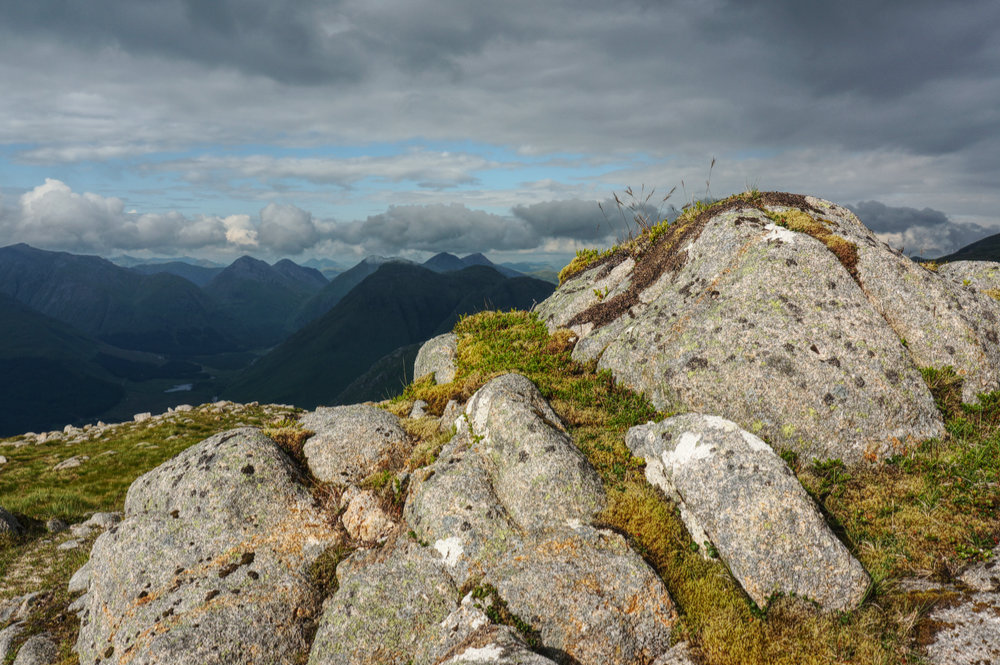
Eventually I was back at the hydroelectric construction site and then on the road back to the bothy. I think I’d underestimated the distance back. Having gained the road, I felt as though I should be near the end, but I still had about three kilometres to walk and I was now feeling very tired. Also, I hadn’t noticed it earlier, but my feet had begun to hurt. Nonetheless, I made it back to the bothy in good spirits, knowing that I’d successfully bagged my first Munro.
It had been a long day, I was pretty tired when I got back but not excessively so and I thought I’d done pretty well. The walk had begun mid-morning and I arrived back just before 9pm, so I’d been walking for around 10 hours. The full implication of this didn’t become clear until the following morning. I was stiff all over and my feet hurt so much that I could hardly put any weight on them. I knew then that this would be the last walk I could do in my Mammut boots and that I’d need to find an alternative if I wanted to keep walking.∗